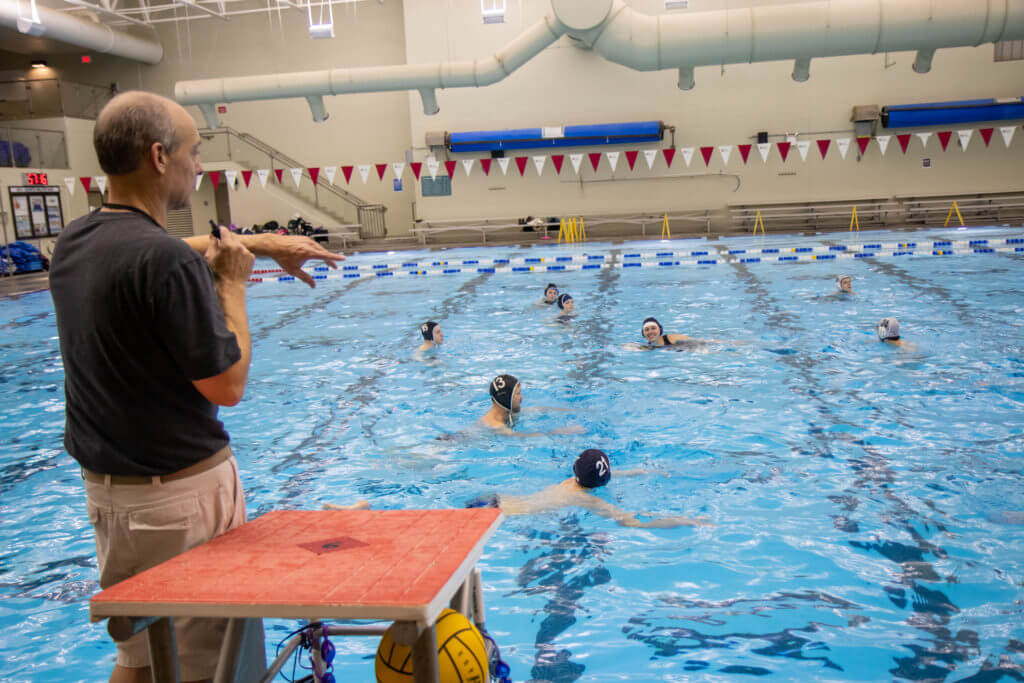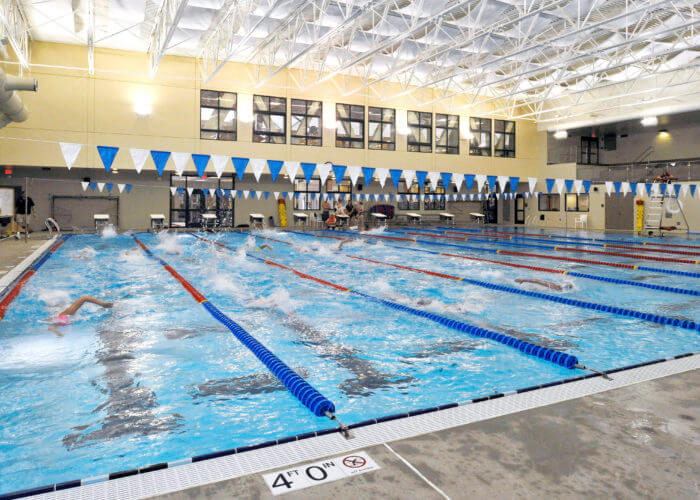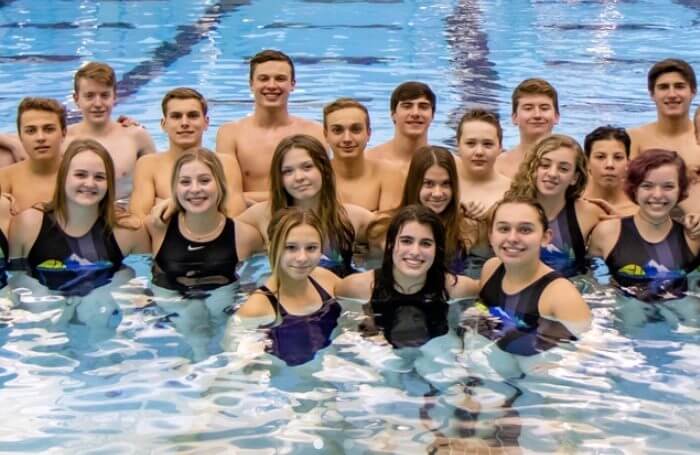Hope For a Water Polo Revival Springs Forth From Idaho

In a moment when water polo can use any positive news regarding COVID-19, a detailed report out of Idaho suggests that—when played in proper conditions—polo may be one of the safest indoor contact sports available to age group athletes.
Mark Collingham, a former polo player for Washington State University who has built an age group power house in Coeur d’Alene, recently put forth a detailed position paper about his club’s experience practice polo.
[Coronavirus and Environmental Considerations for Aquatic Sports]
 With a master’s degree in chemical engineering, and an attention to detail that underscores careful conclusions drawn from six months observation at the Ray & Joan Kroc Center pool, Collingham, head coach for Cour d’Alene/KROC Water Polo Club provides a refreshing perspective on what steps aquatic programs might take to safely get back in the water.
With a master’s degree in chemical engineering, and an attention to detail that underscores careful conclusions drawn from six months observation at the Ray & Joan Kroc Center pool, Collingham, head coach for Cour d’Alene/KROC Water Polo Club provides a refreshing perspective on what steps aquatic programs might take to safely get back in the water.
From early August through the end of October, the polo coach observed approximately 100 swimmers and 50 water polo players participating in anywhere from 3 to 6 practices per week at the Kroc Center. Collingham specified that four additional high school swim teams of 32 swimmers each also conducted practices at the facility.
Swimmers were initially limited to 5 swimmers per lane while the water polo group was limited to a maximum of 25 players a practice. Swim team practices were later expanded to 8 per lane; water polo practices continued with a maximum attendance of 25. Collingham specified that the practice area for water polo has ranged from 4 lanes (272 sq yd) to 7 lanes (477 sq yd).
Key to the good health his club has enjoyed—no transmissions—is maintaining spacing in an indoor facility with a properly equipped HVAC system, one of the Kroc Center’s features.
Studies of infection rates of COVID-19 indicate that prolonged close contact in confined spaces leads to significantly greater infection rates. Conversely, efforts to make contact between individuals short in duration, physically distant, and conducted in open spaces should lead to lower rates of infection. By turning the air over quickly, filtering small particles and providing a high percentage of fresh air, the indoor pool environment may be able to replicate the lower infection rates observed in outdoor settings. [Excerpt from Collingham study]
According to Collingham, the Kroc’s air handling system in the building can supply up to 50% fresh air, a situation very close to being outdoors. That and the fact that the air volume in the center is substantial makes the facility a prime candidate for success in retarding transmission of the coronavirus.

Photo Courtesy: The Salvation Army Kroc Center Coeur d’Alene
“We have strong air circulation in our facility—probably as much as I’ve seen in any other facility,” Collingham said in an interview earlier this week.
A major concern of parents and concerned observers is transmission in the water; the chemical engineer specified that science suggests typical chlorine levels should be more than potent enough to kill the virus.
A study in 2005 found that a similar coronavirus was inactivated within 10 minutes in water containing a free chlorine level of 0.4ppm. The study also showed that nearly half of the coronavirus was inactivated within 1 minute at the same chlorine concentration. It is expected that chlorine is similarly effective in inactivating covid-19 within the pool environment. [Excerpt from Collingham study]
Key to this observation is participants’ continuous exposure to chlorine while swimming and playing polo, resulting in a “washing or rinsing action [that] would be expected to inactivate any coronavirus contained in the mouth, throat and nose surfaces during the athlete’s time in the pool,” the report observed.
According to Collingham, the biggest hurdle for beating COVID-19 is not in the water but on the pool deck. Kroc/CDA players are instructed to come to the pool in their suits then change on the deck after practice before returning home to shower. Occasionally players would need to shower at the center; the coach emphasized that players were encouraged to move as quickly as possible out of the locker room and the center.
If all works out, his club—which includes a junior group ages 7 – 10; a development group ages 11 – 13 and high school athletes 14 and up—will get a chance to compete in the upcoming high school season.
The Idaho polo season starts right after swim season, which typically would mean later this month. A couple of other teams have started to practice, but teams in Boise have not yet got in the water. Current plans are to hold the Idaho state championship in March 2021; an extended season will allow other teams to log enough practice time before they start competing.

Kroc/CDA Water Polo Club players in an earlier time (sans masks). Photo Courtesy: Kroc/CDA WPC
Kroc/CDA is understandably eager to compete; they have dominated regional play, winning seven straight Idaho high school championships. In years past, the team would travel the 200+ miles to compete against teams in neighboring Washington state. But, Seattle teams have only recently begun swimming and ball drills; Collingham hopes his expert observations will spur more polo activity in the region.
Until then he maintains a rigorous practice schedule for his athletes and looks to keep COVID out of his facility, a fight that is hard to win in the midst of rising infection rates across the country.
“I can’t guarantee it,” Collingham said when asked what he tells parents about the risk of indoor polo play. “Certainly, nobody can. We’ve been practicing for almost six months now and I’ve yet to have a transmission from one player to another in the pool.”
Then, presenting an optimistic conclusion, he added: “You’d be hard pressed to find any activity that multiple kids are involved with that would have a better safety record; you can’t do better than zero.”



